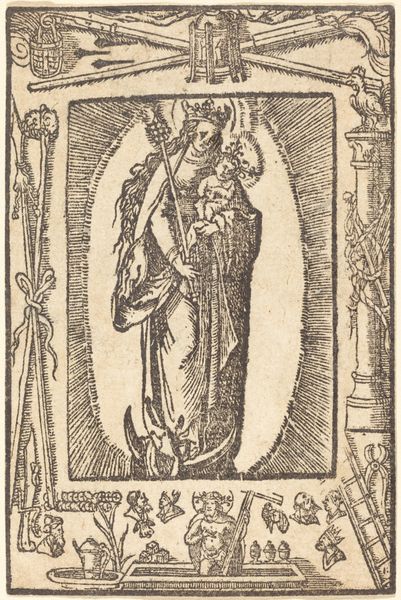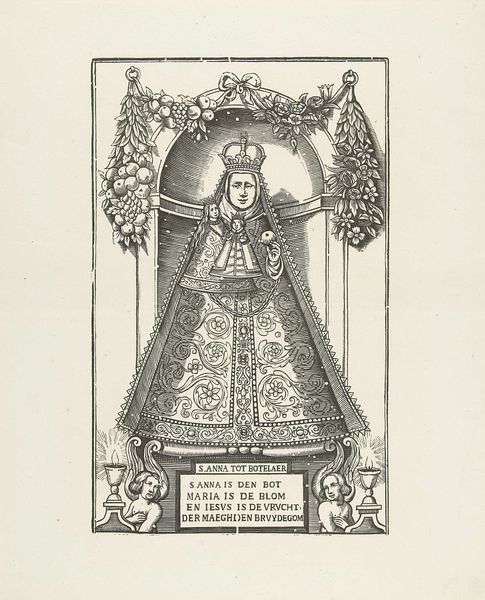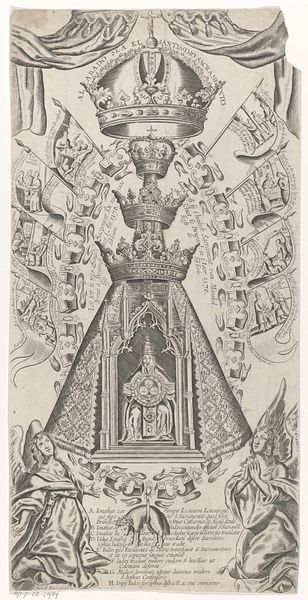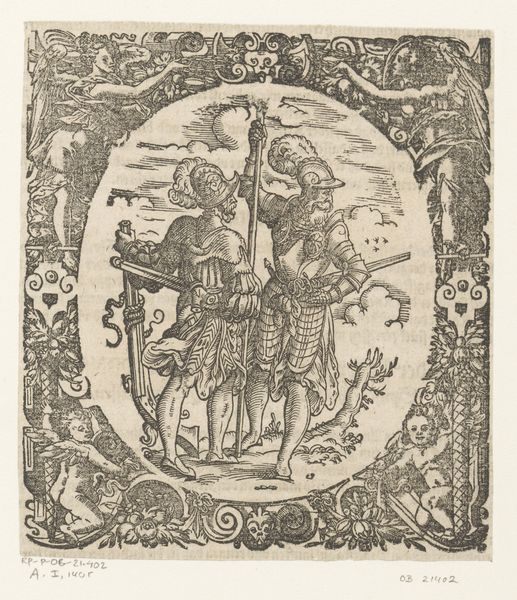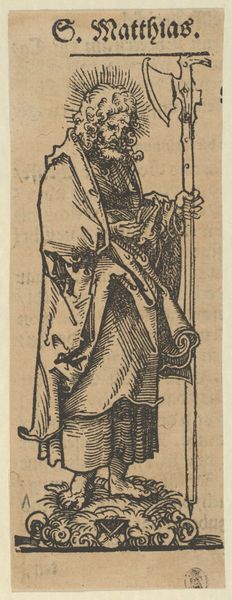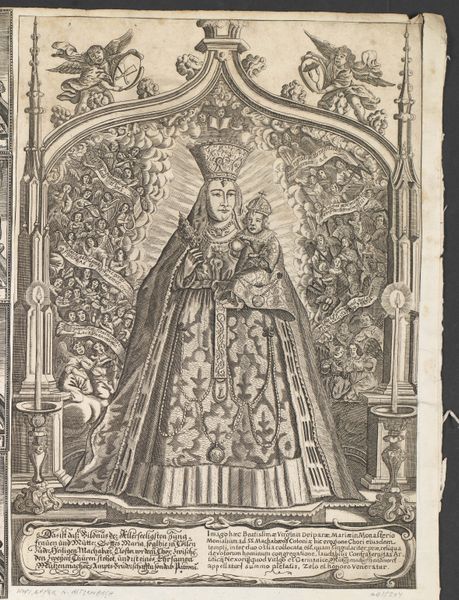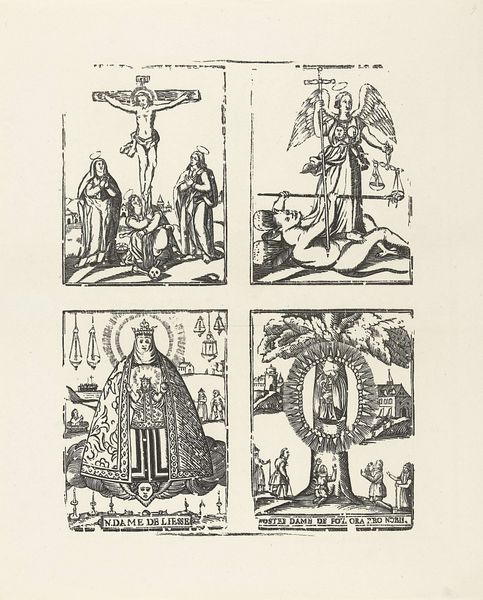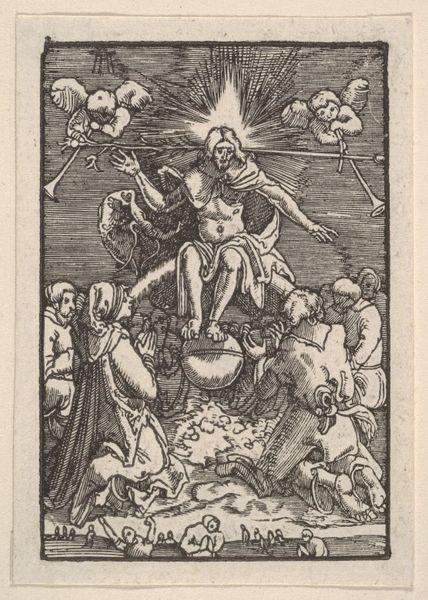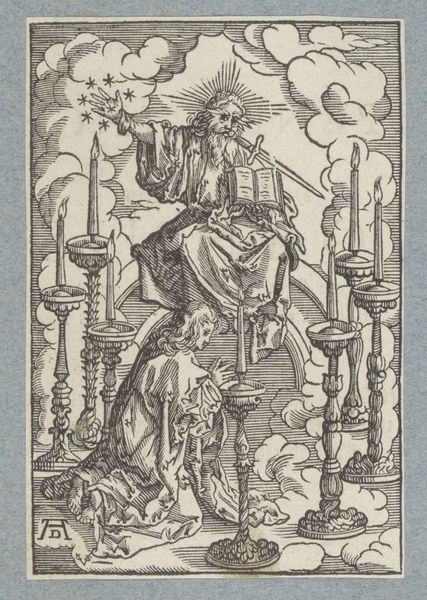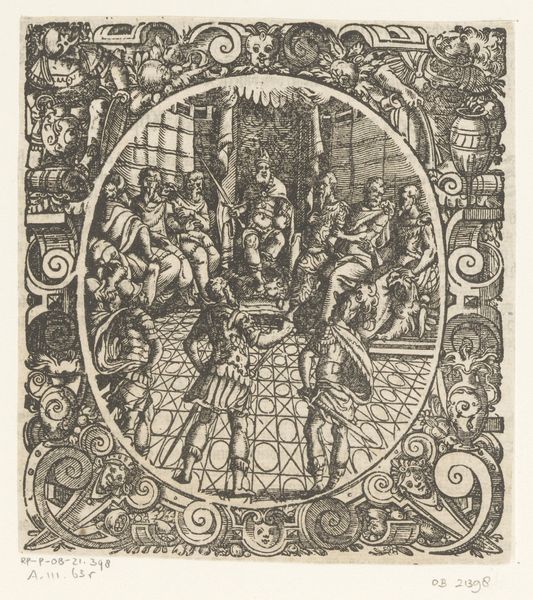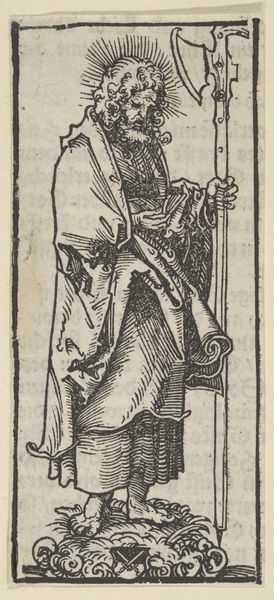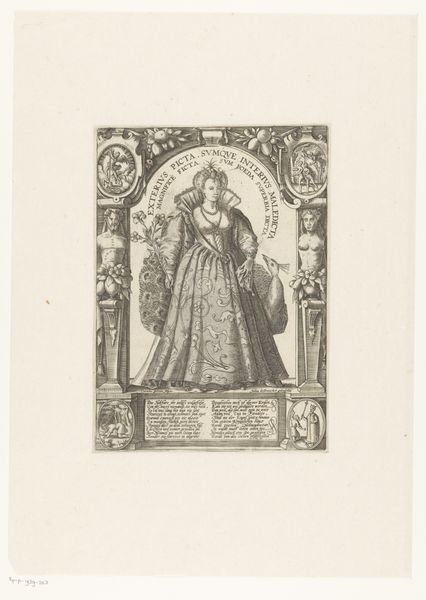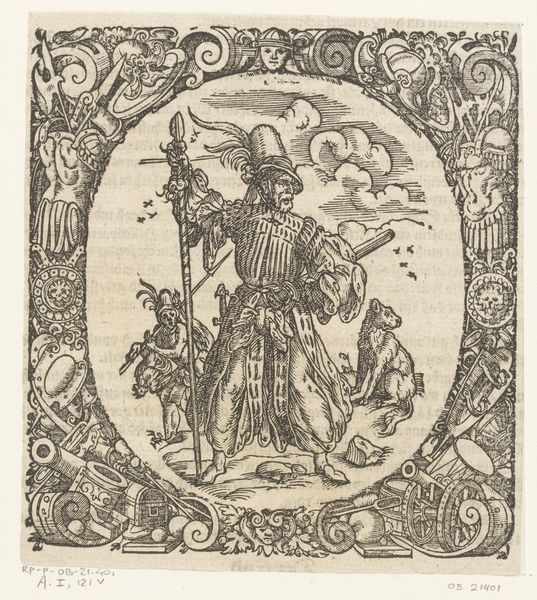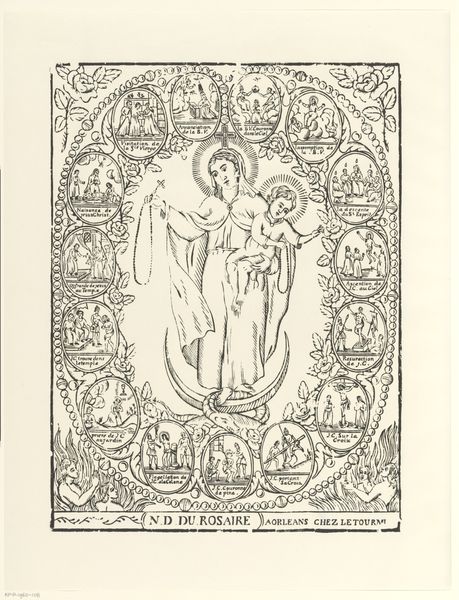
print, engraving
#
medieval
#
pen drawing
# print
#
pen illustration
#
pen sketch
#
old engraving style
#
figuration
#
ink line art
#
pen-ink sketch
#
line
#
pen work
#
history-painting
#
engraving
Dimensions: height 447 mm, width 363 mm
Copyright: Rijks Museum: Open Domain
Curator: This engraving, titled "Maria met kind," is attributed to van der Haeghen, and although its precise creation date is unknown, it likely falls somewhere between 1700 and 1865. It’s held here at the Rijksmuseum. What's your initial impression? Editor: There’s a clear, almost diagrammatic feel, and yet, a powerful presence to this Madonna and Child. It feels deeply rooted in tradition, while the density of detail borders on the obsessive, creating a kind of visual hierarchy. Curator: Absolutely, the iconography is central. The arch, framing Mary with angels, the dove representing the Holy Spirit above – these are familiar visual components of the Virgin and Child archetype. Note also the architectural details of church and other village details in the middleground that might locate us symbolically and even literally. Editor: Yes, but I'm also thinking about the historical context surrounding these symbols. A queen holding an orb and a sword in front of buildings. What sociopolitical functions do these Marian images have? And how might that resonate differently across varied, less privileged audiences? The crown, the robes—these are all signifiers of power. It's interesting how this imagery was circulated through prints. Curator: That's an important consideration. Prints would disseminate specific ideologies—of the Holy family and of social power structures. Here, notice how the line work and layering create a rich texture. The patterns in Mary’s gown seem to draw from textile design, and echo the natural and symbolic world, thus conveying the sanctity of the world through its adornment. Editor: And it does bring up questions of gendered power as well. This idealized version of motherhood and womanhood—how does it shape or confine perceptions of women throughout different historical periods? Even in what might be deemed secular or progressive settings today, this notion can perpetuate specific ideologies of social difference. Curator: Such artwork serves to illuminate complex dialogues between art history and present-day considerations—and the intersectionality of these ideas is definitely revealed within seemingly "devotional" subjects. It gives food for thought when considering art’s cultural agency. Editor: Definitely. The way familiar symbols, like this Madonna and Child, can continue to fuel discussions on gender, power, and social dynamics remains relevant and potent even today.
Comments
No comments
Be the first to comment and join the conversation on the ultimate creative platform.
